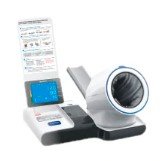Safe Handling and Disposal of Opioid-Related Specimens in Medical Labs and Phlebotomists
Summary
- Medical labs and phlebotomists play a crucial role in handling and disposing of opioid-related specimens safely to prevent harm to themselves and others.
- Strict protocols and guidelines are in place to ensure the safe handling, labeling, and disposal of specimens containing opioids.
- Education, training, and awareness are key components in ensuring that medical professionals comply with safety measures related to opioid specimens.
Introduction
In the United States, the opioid crisis has become a major public health concern, with rising rates of opioid addiction and overdose deaths. As a result, medical labs and phlebotomists are tasked with handling and disposing of opioid-related specimens in a safe and responsible manner to prevent harm to themselves and others. This article will explore the measures being taken in medical labs and by phlebotomists to ensure the safe handling and disposal of opioid-related specimens.
Safe Handling of Opioid-Related Specimens
Labeling and Identification
One of the first steps in ensuring the safe handling of opioid-related specimens is proper labeling and identification. Specimens containing opioids should be clearly labeled with the appropriate hazard warnings to alert medical professionals to the potential risks associated with handling these substances. This not only helps to prevent accidental exposure but also ensures that specimens are treated with the necessary precautions.
Personal Protective Equipment (PPE)
Phlebotomists and other medical professionals working with opioid-related specimens should always wear the appropriate personal protective equipment (PPE) to reduce the risk of exposure. This may include gloves, masks, gowns, and eye protection. PPE serves as a barrier between the specimen and the individual, helping to minimize the risk of contamination and exposure to opioids.
Secure Storage
Proper storage of opioid-related specimens is essential to prevent unauthorized access and ensure the safety of medical professionals. Specimens should be stored in a secure location, such as a locked cabinet or refrigerator, to prevent theft or misuse. Additionally, storage areas should be clearly labeled to indicate the presence of hazardous materials, further reducing the risk of accidental exposure.
Safe Disposal of Opioid-Related Specimens
Disposal Protocols
Medical labs and phlebotomists must adhere to strict disposal protocols when handling opioid-related specimens. These protocols may include specific guidelines for packaging, transport, and disposal of hazardous materials, such as sharps containers or biohazard bags. Disposal procedures should be clearly outlined and followed to ensure that opioid specimens are safely and responsibly disposed of.
Incineration
One common method of disposing of opioid-related specimens is through incineration. Incineration effectively destroys hazardous materials, including opioids, reducing the risk of environmental contamination and exposure. Medical labs may work with licensed waste disposal companies to safely incinerate opioid specimens and other hazardous materials in compliance with Regulations and guidelines.
Documentation
Proper documentation of the disposal of opioid-related specimens is essential for tracking and accountability. Medical labs and phlebotomists should maintain detailed records of specimen disposal, including the date, method of disposal, and any relevant information. This documentation helps ensure compliance with Regulations and guidelines and serves as a record of responsible waste management practices.
Educational Initiatives and Training
Opioid Safety Training
Education and training are crucial components in promoting safe handling and disposal of opioid-related specimens. Medical professionals, including phlebotomists, should receive comprehensive training on opioid safety protocols, including proper handling techniques, PPE usage, and disposal procedures. Ongoing education and training initiatives help to reinforce safety measures and ensure that medical professionals are equipped to handle opioid specimens safely.
Awareness Campaigns
Increasing awareness of the risks associated with opioid-related specimens is key to promoting safe handling and disposal practices. Medical labs and healthcare facilities may implement awareness campaigns or educational initiatives to inform staff about the dangers of opioids and the importance of following safety protocols. These campaigns raise awareness, foster a culture of safety, and encourage compliance with guidelines and Regulations.
Continuing Education
Continuing Education is essential for medical professionals to stay informed about best practices and emerging trends related to opioid safety. Phlebotomists and lab technicians may participate in Continuing Education programs, workshops, or seminars to enhance their knowledge and skills in handling opioid specimens. By staying up to date on the latest developments, medical professionals can maintain a high standard of safety and compliance in their practice.
Conclusion
Medical labs and phlebotomists play a critical role in ensuring the safe handling and disposal of opioid-related specimens to protect themselves, their colleagues, and the community. Strict protocols, education, and training are essential in promoting a culture of safety and compliance with guidelines and Regulations. By implementing measures to minimize the risks associated with opioid specimens, medical professionals can contribute to a safer and healthier work environment for all.

Disclaimer: The content provided on this blog is for informational purposes only, reflecting the personal opinions and insights of the author(s) on the topics. The information provided should not be used for diagnosing or treating a health problem or disease, and those seeking personal medical advice should consult with a licensed physician. Always seek the advice of your doctor or other qualified health provider regarding a medical condition. Never disregard professional medical advice or delay in seeking it because of something you have read on this website. If you think you may have a medical emergency, call 911 or go to the nearest emergency room immediately. No physician-patient relationship is created by this web site or its use. No contributors to this web site make any representations, express or implied, with respect to the information provided herein or to its use. While we strive to share accurate and up-to-date information, we cannot guarantee the completeness, reliability, or accuracy of the content. The blog may also include links to external websites and resources for the convenience of our readers. Please note that linking to other sites does not imply endorsement of their content, practices, or services by us. Readers should use their discretion and judgment while exploring any external links and resources mentioned on this blog.
